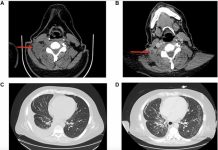Michael A. Rogers outlines four necessary elements to increase further societal understanding about the use of cannabis edibles
Criminalisation of cannabis stagnated research outside the realm of addiction and biomedical studies across Canada before the Cannabis Act (C-45) and eventual legalisation on October 17, 2018. Edibles cycled out a year later and, most quickly sold out through the Ontario Cannabis Store (OCS), our Provincial Government online realtor. Nevertheless, massive voids exist in scientific knowledge of the chronic effects of oral administration of isolated metabolically active cannabinoids (> 100 unique molecules) and, to a lesser extent, but still potentially an issue – the terpenoids, flavonoids, and alkaloids. From henceforth, the author does not consider, nor address issues on overall ethical considerations of general legalisation, addiction, or health aspects that are not unique to edibles.
Knowledge gaps require research to address:
1) encapsulation and formulation strategies altering cannabinoid bioavailability;
2) edibles along the gut-brain axis;
3) anecdotal evidence and the blanket application of the term ‘entourage-effect’ to most health-related claims; and, slightly more obtuse,
4) the sanctity of food.
Cannabinoid encapsulation and bioavailability
Unlike alcohol and even remarkably different than vaped or pyrolysed cannabis, consumption of edibles containing metabolically active molecules introduces unique challenges especially significant to legislation, regulation, and ultimately enforcement. Consumers understand dosing alcohol and inhalation of cannabis in its various forms; however, the oral bioavailability of cannabinoids is far more complex. Alcohol rapidly absorbs in the gastric compartment and throughout the gastrointestinal tract, reaching the bloodstream conferring its ‘desired’ effect. Inhalation is similar, quick, efficient delivery into the bloodstream through rapid absorption in the lungs. In-plant form, the psychoactive and pharmacologically active tetrahydrocannabinol (THC), is carboxylated, tetrahydrocannabinol acid (THC-COOH), and is poorly soluble in water (0.0071 ml/L at 25oC). Supercritical fluid extraction and/or heating decarboxylates THC-COOH slightly improving its water solubility (0.04 mg/L).1
Health Canada limits 10 mg THC/CBD per container for beverages and, based on solubility, would require 25 L to provide the upper THC limit, clearly unrealistic. Across all edibles, including beverages, bioaccessibility can be altered using micro- and nano-technologies, some commonplace in the food industry, while barriers to the market have impeded most. However, companies already tout inventions in THC/CBD delivery; thus, market barriers are dependent on the industries threshold and adversity to risk. Without flexibility in concentration, to gain a competitive advantage by providing consumers more “buzz-for-their-buck,” limits in solubility need drastic improvement. Pardon the pun, but the ‘appetite’ for higher bioaccessibility may enable entry of these technologies into the edibles industry.
Encapsulation strategies ranging from emulsions to more complex SEEDS (self-emulsifying drug delivery systems) alter bioaccessibility.1 In edibles, tailoring lipid composition enables micellization of cannabidiols with lipid digestive products and other surface-active compounds present in the alimentary tract. Two significant issues arise, first, as more advanced delivery systems reach the market, the onset and peak THC blood concentrations could differ drastically from previous consumer experiences. To illustrate the importance, food-grade systems, with very clean labels, are as sophisticated as some excipients in the pharmaceutical industry – greatly enhancing bioavailability. However, from a label, this difference in bioavailability is unbeknownst to the consumer who may have life-altering consequences if not used carefully. Second, the field of Food Science is remarkably advanced, nanotechnologies to improve bioactive solubility are routinely available in academic literature.
Although simple to make, with few exceptions, soft nanomaterials are nearly impossible to detect in food matrices. The edibles industry needs close oversight concerning applications of nanotechnology in edibles and Health Canada General Guidance2 “to identify a nano-based product/material the sponsor will be asked to self-identify when their application concerns a nanomaterial or ‘nanoproduct’” is insufficient, exposing consumers to potential risk.
The GUT-Brain axis and satiety
The gut-brain axis is remarkably complex, involving physical, neurological, and hormonal signaling pathways that control our drive to stop eating and the eventual return of hunger. The satiety cascade helps balance when and how much we eat and becomes relevant in our world plagued with an obesity epidemic. Endogenous endocannabinoid receptors are more widely known for their role in the central nervous system; yet, are located throughout the gastrointestinal tract, among other locations. Amassing evidence shows “the endocannabinoid system is a key modulator of gastrointestinal physiology, influencing satiety.” 3 The “munchies” may not pose much risk to a subset of the population, but the reality is with double-digit obesity rates in most developed nations; it raises concern. The flip side is that this could be tremendously beneficial to those who lack appetite and desire to eat. An often-overlooked aspect of the Gut-Brain-axis is the role of the gut microbiome in health. Chemical and food substances exposed to gut bacteria shape an individual’s microbial diversity/population and metabolites produced thereof – both influence host health.
As any orally consumed molecule progress through the GI, it gets exposed to a limited number of host enzymes; however, unabsorbed bioactive exposure to the gut microbiome is far more convoluted, due to their more extensive enzyme tool kit. The microbiome can metabolise benign molecules into potentially toxic metabolites or less apparent changes may occur in microbiological populations following chronic exposure.
Edibles in disease treatment: The entourage effect
Meaningful advances and up-cycling of cannabis for medical applications require mechanistic cannabinoid structure / biological function studies to demonstrate measurable, cellular, and metabolic changes upon administration of individual, or combinations of, cannabidiols. In today’s research climate, bioactive isolation, identification, purification is all possible and coupled with high throughput cellular assay screening, permutations and combinations can be tested for antagonistic and synergistic effects to maximise treatment efficacy allowing researchers to dissect the “entourage effect.” Industry – government partnerships need to accelerate fundamental, rigorously peer-reviewed research to elucidate quantifiable measures against the specific cellular target for disease treatment. The widespread application of the term entourage-effect is worrisome when used to describe almost all medicinal applications of cannabis.
The sanctity of food
The Western diet is flooded with ultra-processed foods and is the leading cause, along with our sedentary lifestyles, of obesity and chronic diseases such as metabolic syndrome, cardiovascular diseases, cancer, and numerous dysbiosis states of impaired gut microbiota. Such rapid, pronounced changes in the evolution of food our choice/diet had not occurred since the onset of bipedally when our evolutionary ancestors ventured from the forest in search of new sources of food in response to changing climates. The post-industrial revolution entirely changed the foods consumed. The continued normalisation of food ingredients that provide little to no nourishment is a concern across the entire food industry.
References
1. McClements, D.J. Ann Rev Food Sci Tech. 2020, doi.org/10.1146/annurev-food-032519-051834
2 https://www.canada.ca/en/health-canada/services/drugs-healthproducts/nanotechnology-based-health-products-food.html
3. Lee, Y. et al. Am J Physiology-Gastrointestinal and Liver Physiology 2016, 311, G655-G666
*Please note: This is a commercial profile










